 Photo From unsplash
Photo From unsplashOriginally Posted On: How We Built the Best Non-Volatile Memory for Industrial Automation and IIoT Applications Using STT-MRAM | Avalanche Technology (avalanche-technology.com)
Industrial automation requires four major components – Programmable Logic Controllers (PLCs), Human Machine Interfaces (HMI Panels), Industrial Drives & Actuators, and Sensors. The PLC provides the compute function, HMI provides the Graphical User Interface (GUI), Industrial Drives & Actuators turn control signals into mechanical action, and finally the sensors monitor operating conditions, measurements etc. in real time.
These systems require external non-volatile expansion RAM memory to log messages, and data related to alarms and contents of internal registers, state of environment variables etc. This functionality is generically called Data Logging and requires the RAM to have high endurance to survive many repeated read-write operations. This RAM also needs to be capable of fast and reliable writes in order to protect data in the event of unexpected power loss. Features such as Byte Addressability and ability to write without first having to erase help achieve fast write requirement. In many instances, sensors are battery powered and thus low power consumption becomes very important. Figure 1 shows the block diagram of an industrial automation system.
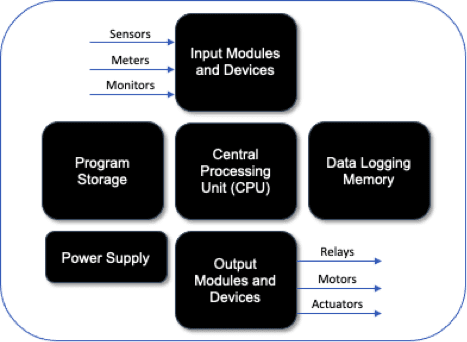 Fig 1. Block Diagram of an Industrial Automation System
Fig 1. Block Diagram of an Industrial Automation SystemThe latest generation of industrial automation systems implement Industry 4.0 and Smart Manufacturing features in the form of real-time communications between manufacturing and value creation, so that factories can adapt dynamically to variations in supply chain, and have improved traceability of resources and products. The interconnection between the factory networks and outside computation systems opens up possibilities of harvesting manufacturing data to improve product quality, provide Just-In-Time maintenance and reduce down time. The prospect of improvement in quality, optimization of maintenance, reduction of downtime, or increased productivity is very desirable to businesses as a whole and manufacturing/operations personnel in particular. As a result, more and more machine data is being logged driving up the density requirements of data-logging memories in these systems. State of the art industrial automation systems now use up to 32Mb of high endurance, fast write, non-volatile memory.
In combination these requirements of persistence, up-to 32 Mb density, high endurance, fast write, byte addressability and low-power render almost all existing solutions useless. EEPROM, Flash and F-RAMs do not have the required density. Resistive RAM does not have the endurance or the reliability. The most commonly used memories, SRAM and DRAM, do not have the persistence. Hybrid solutions such as Battery-Backed SRAM (BB-SRAM) impose maintenance and environmental challenges.
Magneto-resistive Random-Access Memory or MRAM has become the top non-volatile technology memory of choice for system designers. Unlike other technologies such as SRAM, DRAM and Flash that store charge in a memory cell to store information, MRAM uses electron spin to store information. Unlike SRAM and DRAM, it does not require power to retain data. Unlike DRAM, it does not need refresh cycles, thus simplifying system design.
The first generation MRAM used toggle memory switching. In toggle MRAM, a magnetic field is used to change electron spin. While easier to develop, it is difficult to scale up to densities beyond 16Mb. It also suffers from high power consumption. Because it relies on magnetic fields to change electron spin, toggle MRAM is prone to data corruption in the presence of strong magnetic fields. Second generation MRAM called Spin Transfer Torque MRAM or STT-MRAM uses spin polarized current to alter electron spin. STT-MRAM is faster, power efficient, scalable to high densities, and is resistant to external magnetic field changes. Figure 2 shows a comparison of the different types of non-volatile memories discussed in this post. Different characteristics are plotted along different axes. More coverage of the plot area is considered better for meeting the needs covered by the axes.
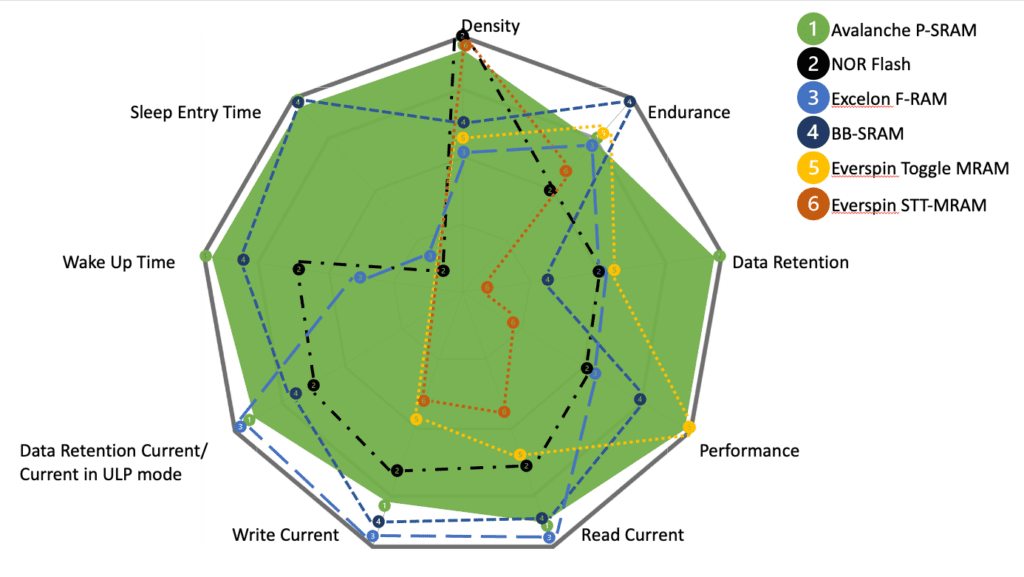
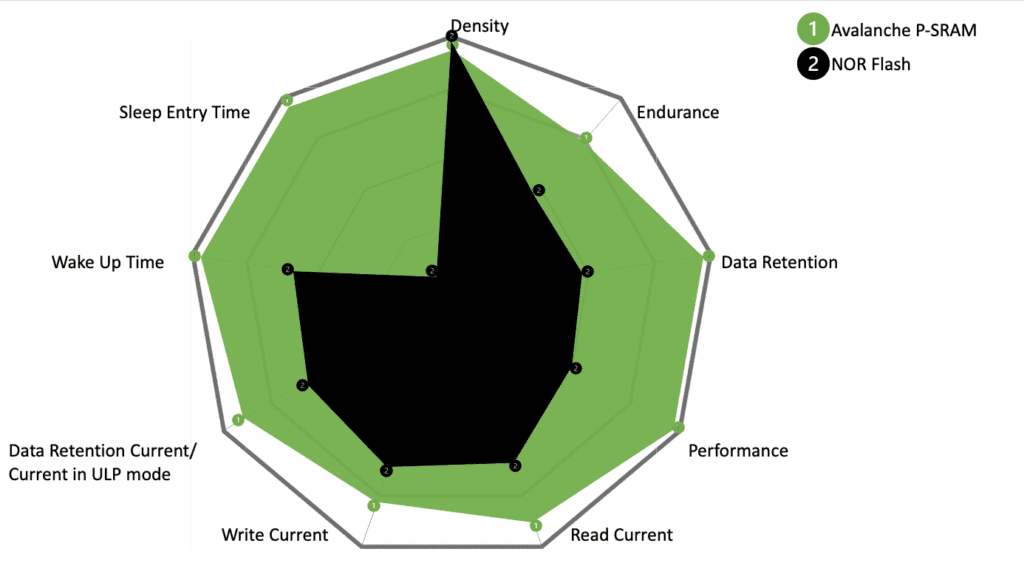
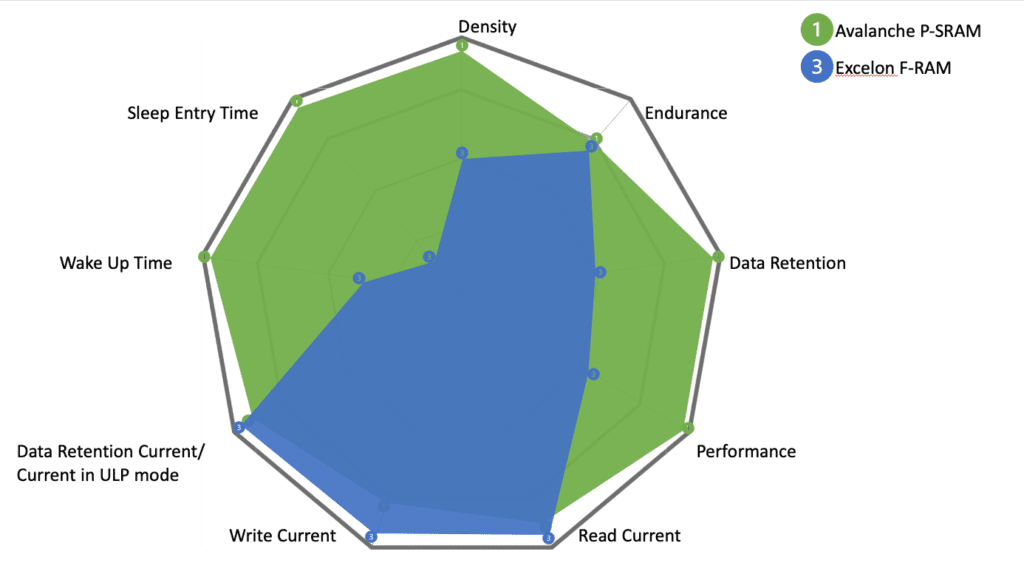
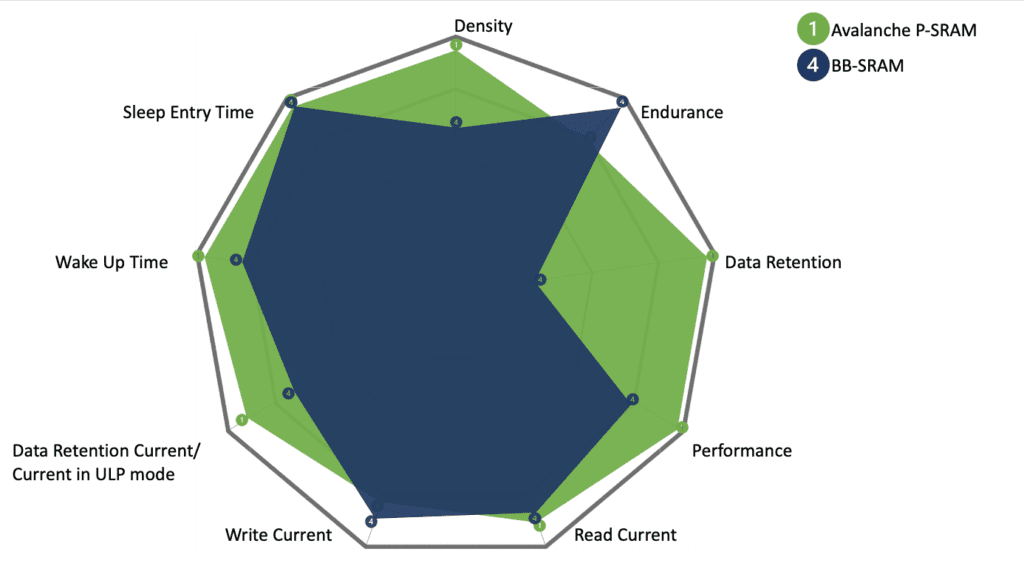
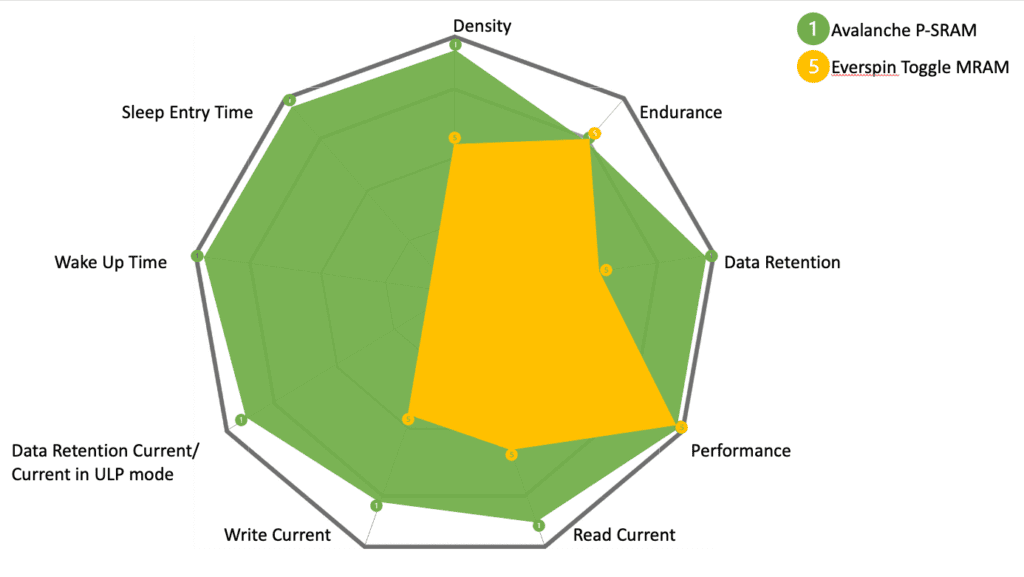
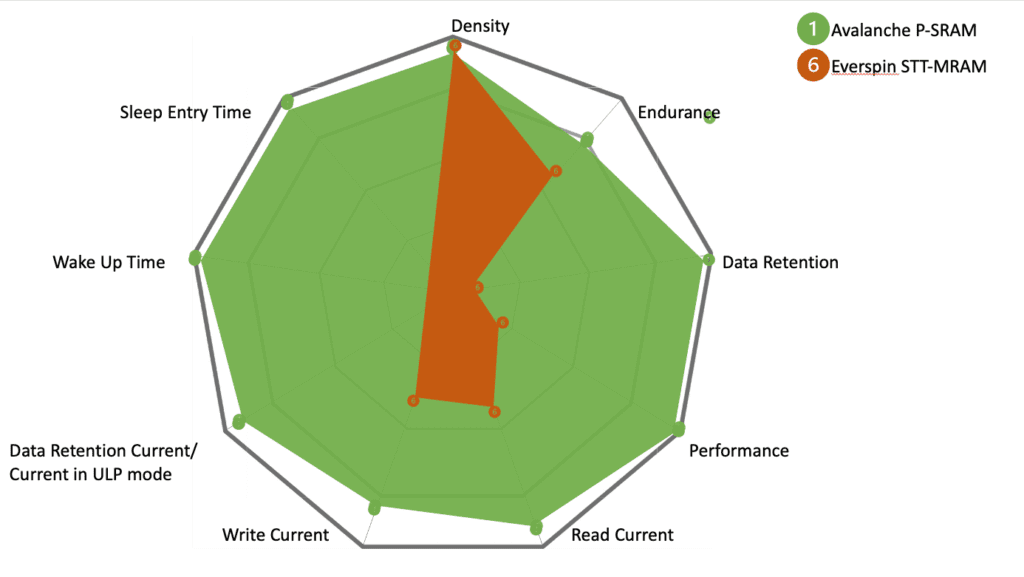 Fig 2. Comparison of Different Types of Non-Volatile Memories
Fig 2. Comparison of Different Types of Non-Volatile MemoriesAvalanche’s Persistent SRAM (P-SRAM) products based on its proprietary STT-MRAM technology is optimized for reliability. Utilizing a state-of-the-art perpendicular Magnetic Tunnel Junction, P-SRAM is optimized to provide endurance up to 1014 write cycles and data retention which exceeds requirements of any known application at temperatures up to 105OC. With standby currents as low as 2.2μA, P-SRAM is also extremely low power. Last but not least, P-SRAM is byte addressable and can write data in as little as 35 nanoseconds, making it ideal for non-volatile memory applications such as program storage and data logging in Factory Automation, Motor Control, Human Machine Interfaces, Smart Meters, and Multifunction Printers. P-SRAM products are available in a standard 35-nanosecond asynchronous SRAM interface as well as standard SPI and high-performance Q-SPI interfaces. While the parallel interface products enable easy migration from BB-SRAM implementations, the serial interface products simplify board design and are available in small footprint packages that are ideal for form-factor-constrained Industrial Internet of Things and Industry 4.0 applications.
Learn more about Avalanche’s P-SRAM products HERE.
